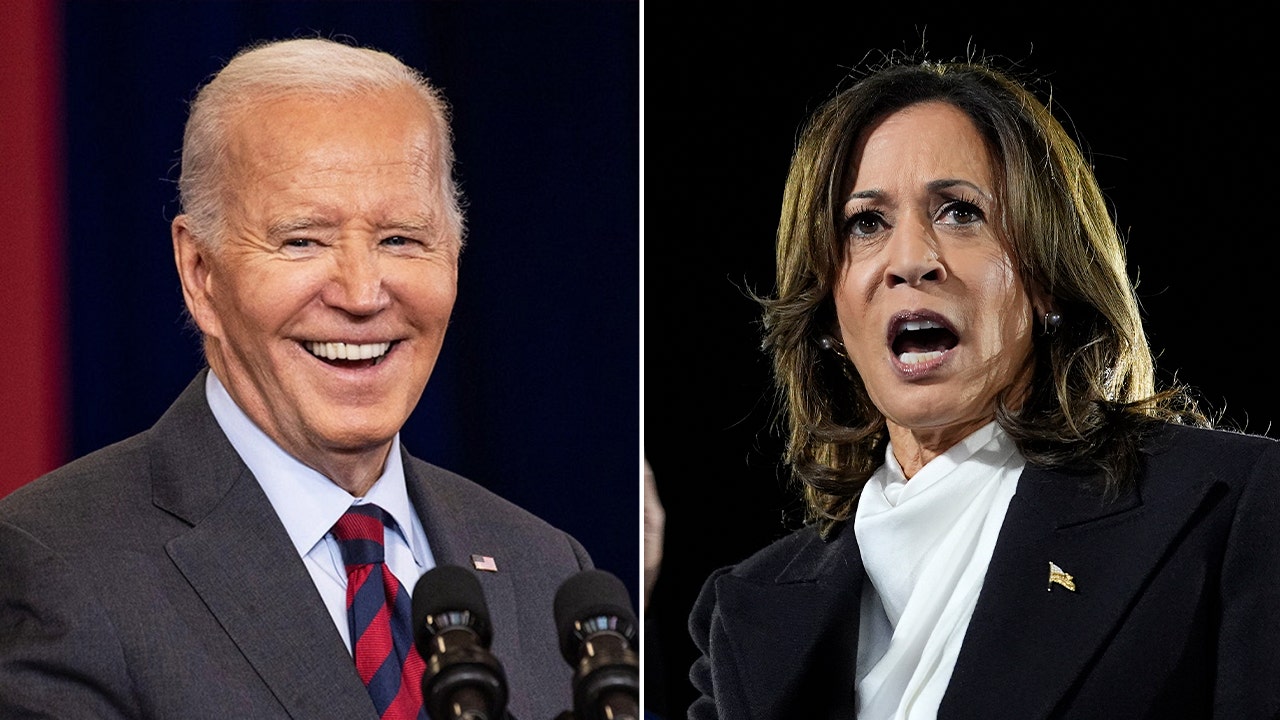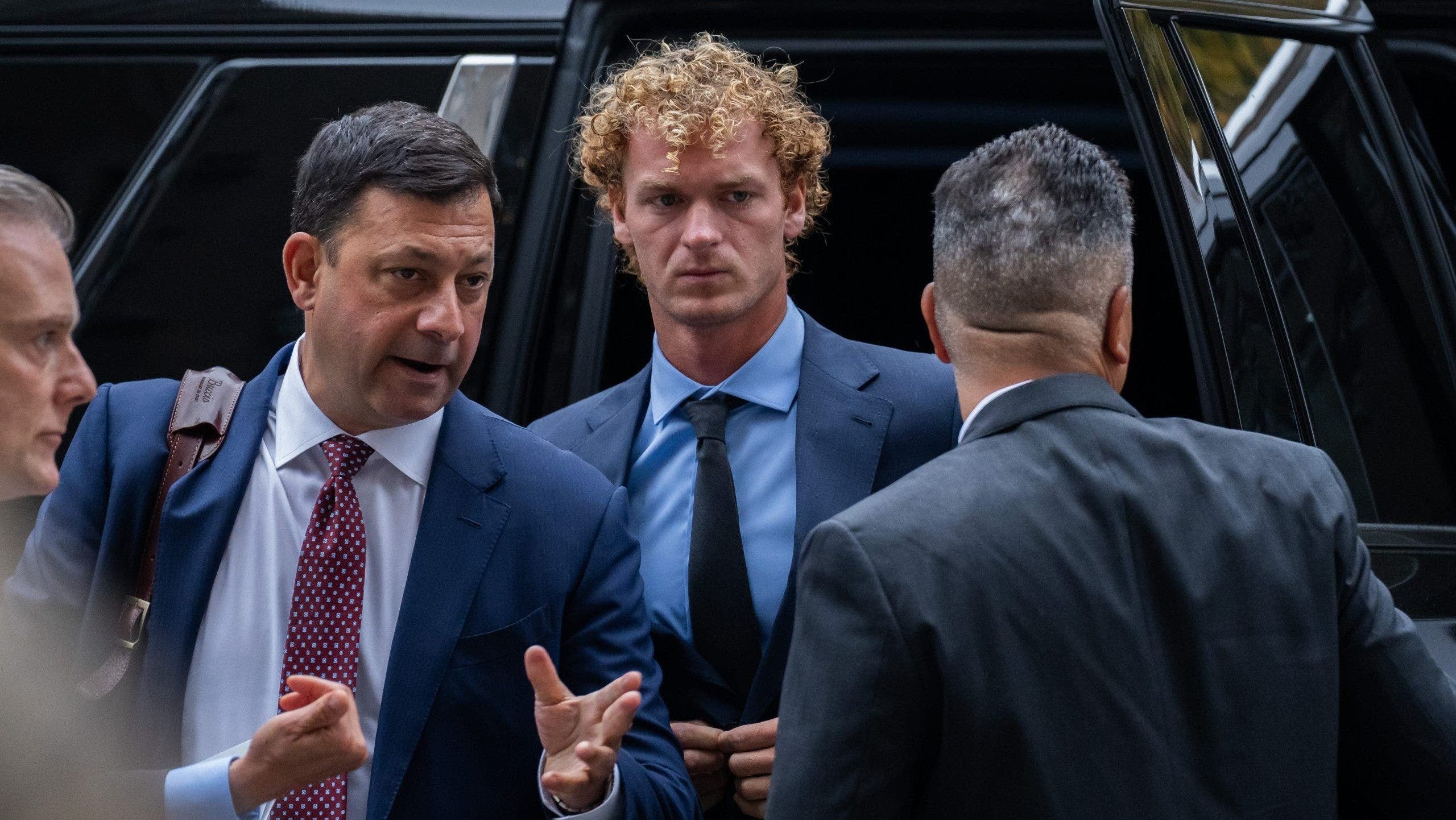Steve McQueen's mix of maternal melodrama and boys' adventure during the blitzkrieg only seems like a conventional movie on the surface
London’s burning, quite literally, in Steve McQueen‘s Blitz — you have not had a second to catch your breath before this WWII movie opens en media catastrophe and the sound of an inferno is filling your ears. It’s September, 1940, and bombs are dropping on Blighty with alarming regularity. Firefighters are attempting to contain a blaze that’s consuming a building when one of the hoses slips from a man’s grasp. It violently knocks him unconscious and begins spraying everything but the fire, whipping itself snake-like around the scene of its own free will. Meanwhile, someone seems to be slowly turning the volume up on the sound mix and the fury, making you feel as if you’re enduring an aural assault that mirrors the one happening onscreen. Cut to: high above the city, as another round of bombing begins — but as seen from the P.O.V. of the falling armaments themselves. Everything soon devolves into a flurry of static-y images straight outta Stan Brakhage’s back catalog. The noise keeps getting louder, and louder…
Then: silence. A field of flowers. Everything’s gone from actually deafening to dead silent. The whiplash from din to nil is enough to make you wish they’d handed out neck braces at the door. (Note: The movie is being distributed by Apple and will have a brief theatrical run on November 1st before its starts streaming on Apple TV+ on November 22nd. Given the immersive experience that Blitz hopes to conjure up for viewers, we strongly recommend seeing it in a theater if at all possible.)
McQueen first made his name as a visual artist before turning to filmmaking — he still mounts site-specific installations — and these early scenes of chaos and eerie tranquility remind you that his roots in that world run deep. The use of space, time and oddly beautiful images involving agony and aggression turn works like Hunger (2008) and Shame (2011) into something akin to gallery-worthy haymakers; they’ve remained such key parts of his cinematic aesthetic that even when he’s working with a literary adaptation like 12 Years a Slave (2013), there’s a sense of something experiential happening in and around the narrative. Just because his movies engage your amygdala with high-art signifiers doesn’t mean they won’t also punch you in the gut.
Editor’s picks
It helps to keep all of this in mind when watching Blitz, which — after that jittery preamble and some peripheral life-during-wartime interludes — settles into parallel grooves destined to eventually converge. An opening disclaimer tells us that 1.25 million Londoners were evacuated during Germany’s months-long blitzkrieg attacks against the city, and roughly half were children. One such kid, a nine-year-old named George (Elliott Heffernan), is being sent to the country by his mother, Rita (Saoirse Ronan). After a close call involving a crowd and locked subway gates, she wants him to sit the rest of the war out in a much safer environment. He’d rather brave the bombings with his mum and grandad (Paul Weller, former singer of The Jam and The Style Council) at home.
Nevertheless, Rita puts the lad on a train headed to the countryside, along with dozens of other youngsters. As for her, she doggedly goes back to her job at a munitions factory, doing her very best to keep calm and carry on. A few hours into the ride, after George have stood up to some bullies and befriended the girl sitting across from him, he calmly gathers his things and walks to one of train’s doors. Then he jumps off, hitting the ground and pointing himself toward a still-smoldering London off in the distance.
It’s a while before Rita finds out that George has gone AWOL. But even before she’s informed that he never made it to his destination and scours the city for her missing child, Ronan gives you a portrait of a mother second-guessing every decision she makes, still grieving the loss of George’s father, and stuck in an existential rut when not simply trying to survive. The Irish actor excels in the kind of roles that require grace under pressure, and unsurprisingly, she uses Rita’s resilience and steady-as-she-goes reserve as a ballast against both the anxiety within and the hurlyburly all around her. And yet, she’s responsible for Blitz‘s maternal-melodrama side of things, while Heffernan holds up the boys’ adventure half of the equation. It’s a tale of two subgenres, neither of which seem properly served by having to jostle for space. You can see why those who view McQueen’s past works as radical and formally revolutionary have labeled this as his most conventional film to date, and thus, in their jaded view, a disappointment.
Related Content

To dismiss this outright as the director’s version of a patriotic, old-school Rank Organisation war movie, however, is to ignore the far more interesting movie happening right beneath your nose. You just have to keep your eyes out for it. Having given us not just one but two extremely familiar storylines, McQueen then proceeds to fill up both of them with details, incidents and side players. Some fall flat, like an encounter at a shelter that equates homegrown racism with the German variety — the fact that it’s based on a real confrontation doesn’t feel any less didactic or righteous. Others, such as the Dickensian gang of thieves that briefly take George in, feel like they might have been airlifted in from a collegiate production of Oliver Twist. Not even Stephen Graham playing the criminal-in-chief as one part Fagin, three parts Bill Sikes can salvage these sequences.
Trending Stories
But then there is Rita’s triumphant live rendition of a song titled “Winter Coat” (an original tune composed for the movie by McQueen and Nicholas Britell) for BBC Radio, which ends with her fellow workers storming the stage and demanding more access to underground tunnels during attacks. And George wandering past shops where a mural of masters and slaves makes the nation’s colonialist legacy seem quaint. And not one but two acts of kindness that hide betrayals, proving that people are not to be trusted. And an odd, extended detour through a swanky nightclub full of jazzbos and swells that initially seems like a pointless bit of period-piece spectacle — until George finds himself walking through it after an explosion, and what was the epitome of the good life has become a mass grave. Not to mention a prime spot for mass graverobbing.
These bits of peripheral business on the way to a tearful reunion arguably underline the real thrust here — that while Britain was under siege, it was also very much a nation at war with itself. Compared to the agony and the ecstasy on display in McQueen’s extraordinary Small Axe compilation, which celebrated the United Kingdom’s diaspora culture while forcing the country to reckon with its institutionally racist past, this might seem like weak tea. Yet the quiet puncturing of the myth of WWII solidarity on the homefront feels nearly as visceral a shock to the system as that opening of fire and carnage. It’s not Blitz’s sensory-overload sturm und drang that leaves you gasping for breath. It’s the sneak attack.

 2 hours ago
1
2 hours ago
1
















.png)

.png)
.png)
.png)













 English (US) ·
English (US) ·  Hindi (IN) ·
Hindi (IN) ·